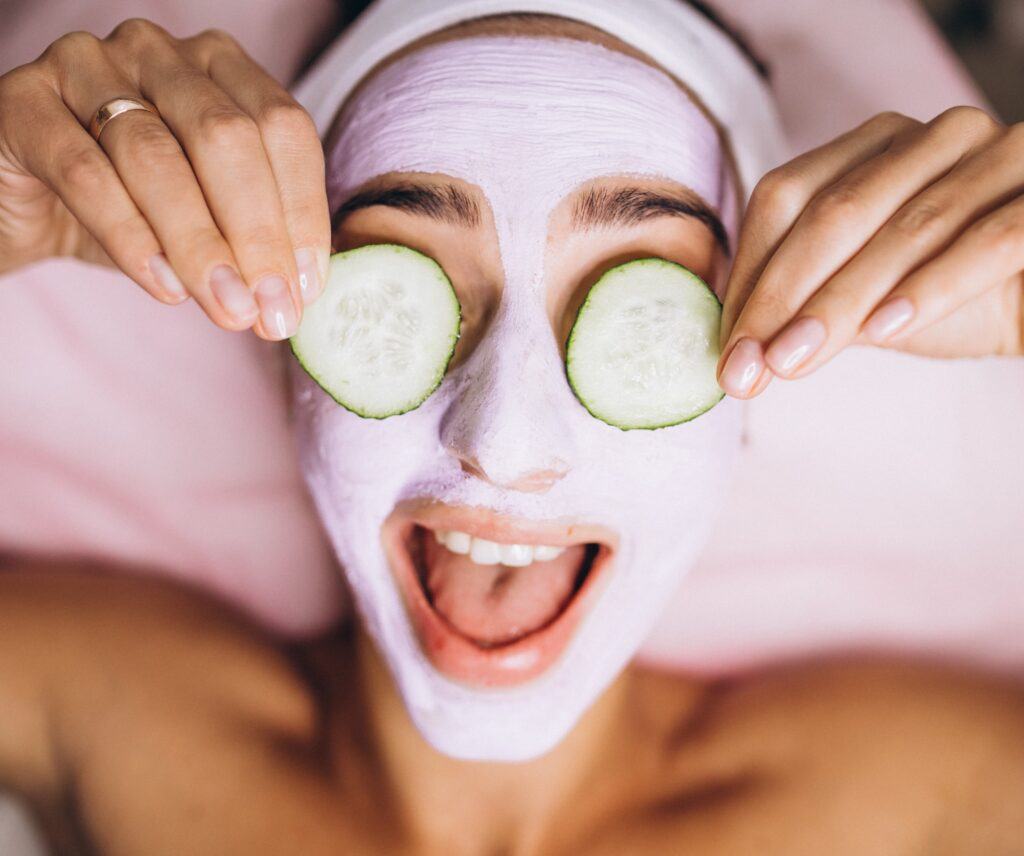
If you’re grappling with dry skin, you’re not alone. It’s a condition many of us face, particularly during harsh weather or as a result of certain habits. In this post I’m going to guide you through understanding the basics of dry skin, what causes it, and the signs you should look out for in case you are not sure if your skin is actually dry.
Our skin is equipped with a natural barrier. Think of it as a protective wall that locks in moisture. When this defense is compromised, skin loses hydration, and becomes dry and flaky. This isn’t just about discomfort; it’s also a signal of your skin’s health.
You’ll be surprised to know how many factors contribute to dry skin. Some you can’t control, like cold, dry air in winter or genetic predispositions. But others – like hot showers, harsh soaps, or your choice of moisturizer – are all lifestyle factors you can manage.
Recognizing the symptoms of dry skin goes beyond a rough texture. Look for itching, redness, and deeper lines. And don’t worry too much about occasional dryness; only in persistent or severe cases when you should seek professional advice.
You see, diving into the world of natural remedies for dry skin requires a foundation of understanding. In the next section, I’ll take you through what to look for in natural remedies and how they’re evaluated for effectiveness. That’s going to include some expert dermatological insights and the critical role diet plays in skin health.
Critical Evaluation of Natural Remedies for Dry Skin
In my experience, the term ‘natural remedies’ might conjure images of herbal mixtures and age-old treatments passed down through generations. But when it comes to taking care of your skin, it’s crucial to understand what ‘natural’ really means and why it matters.
So, what’s the rub with these natural remedies? Think of it this way, not everything labeled ‘natural’ is automatically good for you. That’s why it’s important to look at the actual benefits and risks associated with these so-called ‘gentle’ solutions.
When assessing the effectiveness of natural remedies for dry skin, I aim for a balance between traditional knowledge and current scientific research. The goal is to differentiate between what’s merely popular folklore and what’s backed by evidence.
Don’t worry too much about navigating this on your own. Dermatologists and researchers have already done some heavy lifting, determining which natural ingredients really help with dry skin. I’m here to help you tap into that expertise.
This isn’t just about slathering something onto your skin and hoping for the best; it includes understanding compounds in natural remedies that help retain moisture or repair the skin barrier. Take, for instance, essential fatty acids found in certain oils that can mimic your skin’s natural lipids.
You should also consider the role of diet and hydration. Your skin reflects what you put into your body. Drinking plenty of water and eating foods rich in omega-3s and antioxidants can bolster your skin’s ability to hold onto moisture and protect itself from environmental stressors.
With a critical eye and a thoughtful approach to integrating these natural remedies, you’re setting yourself up for success. Let us now go through the list of remedies that really work, looking not just at the claims, but at the real-world impact on dry skin.
Ten Natural Remedies for Dry Skin That Truly Deliver
I’m excited to share with you the top 10 natural remedies that have been backed by science to help with dry skin. These aren’t just old wives’ tales; they’re methods proven to help retain moisture and support the skin barrier.
- First on the list is coconut oil. It’s been studied for its ability to replenish the skin’s lipid layer. Apply a thin layer of virgin coconut oil before bed, and let it work overnight. This simple act can make a noticeable difference in your skin’s texture.
- Next, we’ve got honey, a natural humectant. A DIY honey mask can draw moisture into the skin. Just remember, it is sticky business, so you’ll want to rinse off thoroughly after 15 minutes.
- Aloe vera comes in third, known for its soothing properties. It’s particularly great for those times when your skin feels tight and inflamed. Apply directly from the plant or use a pure aloe vera gel.
- For those who enjoy a bit of luxury, oatmeal baths are more than just a stress reliever. They contain compounds called avenanthramides that can reduce inflammation and redness. A cup of colloidal oatmeal in a warm bath could be your skin’s new best friend.
- Let’s not forget about shea butter. It’s rich, moisturizing, and full of vitamins that help skin heal and regenerate. Work it into specific dry areas, like elbows and heels, to see impressive results.
- Almond oil is next up. It’s not as heavy as other oils and is perfect for those who need a lighter touch. A small amount can go a long way in hydrating the skin.
- If you’re looking for an anti-inflammatory boost, consider chamomile. A cold compress made from chamomile tea can calm irritated skin, a handy trick for those with dry, sensitive skin types.
- Sunflower seed oil holds its own as a non-irritating moisturizer and is well-tolerated by many different skin types. A thin, even layer can help maintain your skin’s natural barrier.
- Hydrating from within is crucial, and cucumber is not only refreshing but also hydrating. Incorporate it into your diet or use slices directly on the skin for a quick moisture pick-me-up.
- Finally, yogurt isn’t just for breakfast. The lactic acid in yogurt acts as a gentle exfoliant, helping to remove dead skin cells without excessive irritation. Apply as a face mask, rinse after 10 minutes, and follow up with a light moisturizer.
Remember, these remedies are about more than just applying products; they’re about nurturing your skin. Stay consistent with your treatments, and always patch-test new substances to ensure they agree with your skin.
Incorporating Natural Remedies into Your Routine
First off, I want to emphasize how crucial it is to tailor any skin care regimen to your specific needs. No two skins are alike, and that means choosing something that resonates with you, and of course, works for your skin.
Bringing natural remedies into your routine doesn’t have to be an overhaul. You can start small, like introducing one of the top natural moisturizers we discussed earlier, and then see how your skin responds. It’s the listen-and-learn approach that often yields the best results.
When opting for natural skin care products, it’s not only about their effectiveness but also about being environmentally conscious. Look for sustainably sourced ingredients and brands that prioritize eco-friendly practices. This way, your skin isn’t the only thing getting the attention it deserves – our planet benefits, too.
Still, it’s important to remember that ‘natural’ doesn’t automatically mean ‘risk-free.’ Always patch-test new products to make sure you don’t have a reaction and discontinue using them in case irritation occurs. If you’re uncertain, consulting with a dermatologist is a smart move.
Lastly, take note of how your skin feels and looks after introducing the natural remedy. Is it softer? Less flaky? Use these observations to inform whether you should continue with the product, switch things up, or maybe even add more natural elements to your routine.
Remember, your first attempt at integrating natural remedies doesn’t need to be your last. Your skin will change with seasons, age, and lifestyle, and so should your skincare. Stay adaptive and informed, and don’t hesitate to refine your approach as you go along.
And, of course, I am here for all the questions you might have! 😊

You can read all about dry skin, including tips and product recommendations, at the following links:
Comprehensive Guide to Managing Dry Skin: Causes, Treatments, and Daily Care
Daily skincare routine For Dry Skin: Tips And Products That Make A Difference
How To Choose The Right Moisturizer For Your Type Of Dry Skin
Steps For Proper Dry Skin Care: Expert Tips And Tricks
Common Mistakes In Dry Skin Care And How To Avoid Them
Image by Freepik
